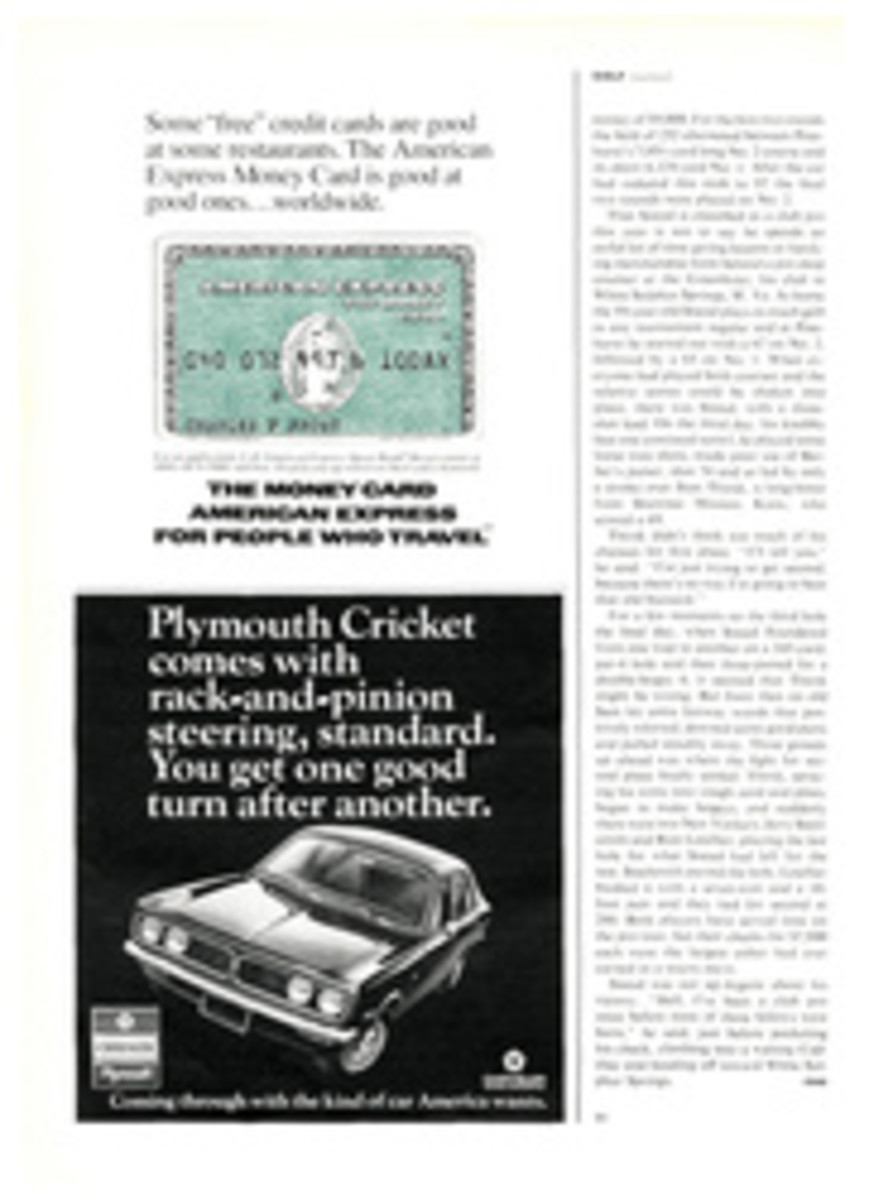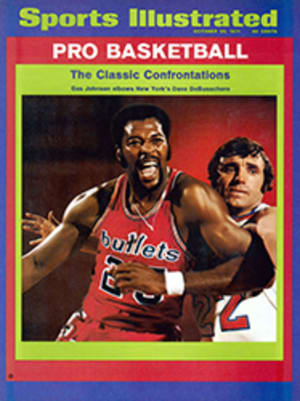
"He's Dead," And Australia Mourned
His name was Phar Lap, meaning lightning strike in Javanese, and for almost 40 years now his body—mounted and preserved under glass in Melbourne—has been maintained as one of Australia's national shrines. Looking at him today you can see that this racehorse, a happy, red chestnut giant standing well over 16 hands, was the kind of steed you could trust with your $2 or your little daughter—he would bring either one home safe and sound. In 51 starts he won 37 times and finished in the money another five. He won at every distance from six furlongs to 2½ miles. If he had not died tragically while in his prime, he might have proved to the world he was what the Australians had always said: the greatest racehorse ever.
The story of Phar Lap is the stuff they used to make movies out of. In 1927 Harry Telford was an Australian trainer with no particular reputation who owned a half interest in a mare named Miss Kate. Miss Kate was not much for speed, but she had a strong heart and was a good stayer. At the yearling sales that season, Telford noticed a horse listed with the same bloodlines as Miss Kate. Telford persuaded David Davis, an American, to buy the horse, Phar Lap, for $800. When Davis saw the animal—someone referred to it as "a donkey" and "a throwback to a giraffe"—he was appalled. He leased the horse back to Telford for three years, in exchange for a third of his earnings.
Phar Lap was clumsy and slow to learn. He raced five times as a 2-year-old and finished well back all but once—winning a six-furlong sprint at Rosehill. Telford was disappointed but found it hard not to love the friendly horse, who enjoyed chewing the shirts of stableboys because he liked the sound of ripping cloth. He especially doted on his exercise boy, Tommy Woodcock.
Because he had nothing better to do with him, Telford disregarded his jockey's advice and began running the horse in longer races as a 3-year-old. By then Phar Lap had filled out, and the move paid off. On Oct. 5, 1929 he romped home 3½ lengths ahead in the Australian Jockey Club Derby, and Australia had a new racing hero. In the autumn of 1930 Phar Lap won nine in a row, including Australia's prestigious two-mile Melbourne Cup. And in the spring and summer of 1931 he ran off 14 straight wins. Meanwhile, Davis had gratefully resumed ownership of the animal.
By 1932 Phar Lap, now a strong 6-year-old, had won $282,250 in stakes money. Owner Davis began eyeing the rich pickings in America, where he figured he could earn another 5300,000 in a single season, and he shipped the horse off to California for the $50,000-added Agua Caliente Handicap in Tijuana, then the richest purse in racing.
American experts were skeptical. Famous European horses had come to the U.S. on numerous occasions, only to stumble over their reputations. And no horse who had come from so far was ever expected to race so soon. A mere two months would elapse between Phar Lap's arrival and his race. Besides, Phar Lap was unused to dirt tracks, and his competition would be much tougher.
Race day, March 20, was a fiesta. Hollywood emptied out, with such stars as Buster Keaton, Eddie Cantor and Gilbert Roland flying down to watch Phar Lap, who had been dubbed "The Red Terror." By post time the word was that Phar Lap was as good as his clippings, and he went off at 3-2. Starting from post position nine in a field of 11, he lay seventh at the grandstand turn under a tight rein. He began to hit his stride in the turn, and going into the backstretch he took the lead. At the ‚Öúths pole the red gelding opened up a four-length lead. Rounding into the stretch, Reveille Boy, under savage whipping, pulled even, but Phar Lap shrugged off the challenge and won by two lengths. He had clipped a fifth of a second off the track record, running the mile and a quarter in 2:02[4/5]. In the winner's circle there was not a speck of lather on him, and he was hardly blowing. In a single race he had captured the fancy of the American turf world.
Colonel Matt Winn, then president of the American Turf Association, who had watched Man o' War run a decade before, declared, "Phar Lap is like a new Babe Ruth to the turf." Immediately plans were made for one of the finest international stakes races in history—a mile and a half at Belmont against a field that would include Twenty Grand and Equipoise.
Two days after the Caliente race, Phar Lap was sent to a private training stable outside of San Francisco to get ready for his tour of the States. On April 4 Woodcock, by now his trainer, gave Phar Lap his last feed of the day—wheat bran from Australia mixed with New Zealand oats, and his mandatory sugar cube. The next morning the horse was clearly sick. Woodcock ran for a veterinarian, and when they got back Phar Lap had stumbled out of the stable and was staggering around the training track, racked with spasms of pain. He collapsed, spewing blood from his mouth. There was nothing the vet could do. A sobbing Woodcock lay down next to the stricken horse and cradled him until he died.
The headlines in Australian newspapers said simply, HE'S DEAD. The nation went into official mourning. Flags were flown at half-staff and regular radio programming was preempted for dirges that were usually played only at state funerals.
At first it was announced Phar Lap had died of the colic, but an autopsy showed heavy doses of arsenic in his stomach. Phar Lap had been poisoned. But how, and by whom? Many Australians were quick to assume that American gangsters had done it. Some Australians still believe it. But it is more likely that the poisoning was a dreadful mistake. A few days before Phar Lap died, a nurseryman had sprayed the trees of the ranch with a lead arsenic insecticide. It was too windy to do a good job, but he went ahead anyway. The spray, carried by the wind, coated the grass where Phar Lap grazed.
To this day the memory rankles in Australia, and Americans can still get into an argument in the nicest pub in Sydney over the Phar Lap tragedy. It is understandable. After all, they had sent us the best horse their continent had ever known, and we shipped them back a monument.

